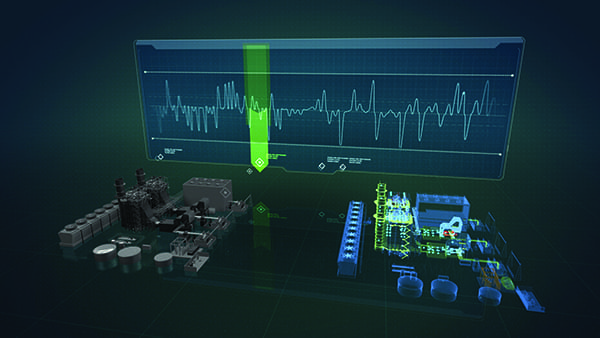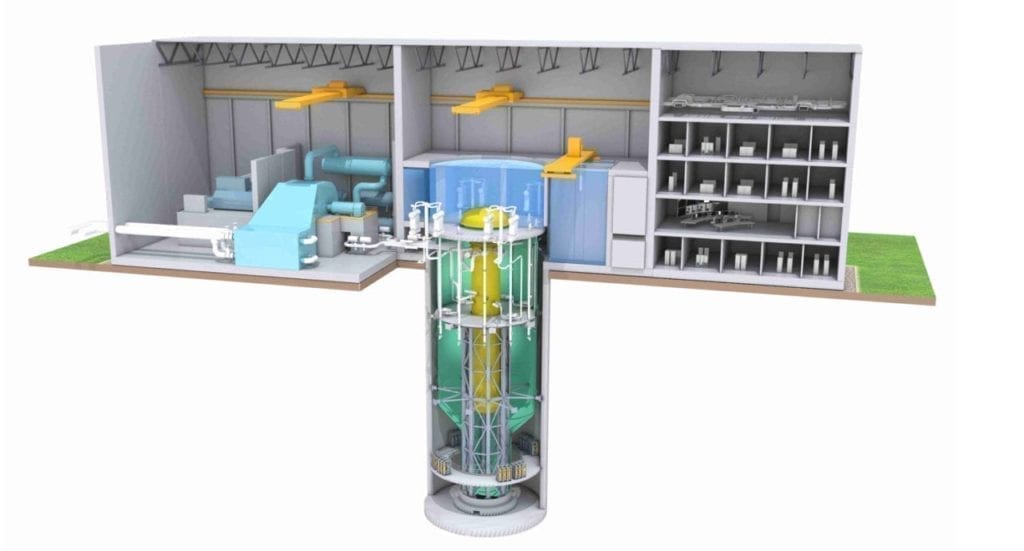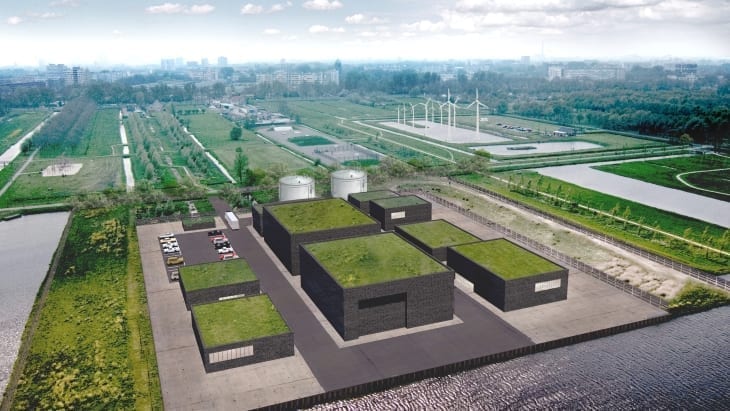Advanced Nuclear Reactor Designs to Get Digital Twins
The post Advanced Nuclear Reactor Designs to Get Digital Twins appeared first on POWER Magazine.

Nine projects will get $27 million in federal funding to develop digital twin technology for promising advanced nuclear reactor designs-including Kairos, Xe-100, BWRX-300, and the SSR-W-and help achieve a ten-fold reduction in their operations and maintenance (O&M) costs.
The funding announced by the Department of Energy (DOE) on May 13 will be furnished under the Advanced Research Projects Agency-Energy's (ARPA-E's) Generating Electricity Managed by Intelligent Nuclear Assets(GEMINA) program. Introduced in October 2019, the GEMINA program bolsters research efforts to use artificial intelligence and advanced modeling controls to create tools that introduce greater flexibility in nuclear reactor systems, increased autonomy in operations, and faster design iteration.
GEMINA has also set an ambitious goal of helping nuclear reactor developers reduce O&M costs by a factor of 10, mainly through the use of predictive maintenance and model-based fault detection. ARPA-E has noted that GEMINA projects will focus on O&M solutions for the reactor core, balance of plant, or entire reactor plant system. Because no advanced reactor units are currently operational, teams working on core operations are also working to develop cyber-physical systems that simulate advanced reactor core operating dynamics using a combination of non-nuclear experimental facilities," it said.
Kairos and GE Hitachi Major RecipientsFunding announced on Wednesday goes to an assortment of interesting projects.
Two projects will support Kairos Power, developer of a fluoride salt-cooled high-temperature reactor. Argonne National Laboratory will get $2.2 million to slash the reactor design's O&M costs through advanced sensing and automation. The University of Michigan, meanwhile, will get $5.2 million to develop a scalable digital twin that will be first validated on a molten salt loop operating on campus and then applied to Kairos's reactor design to demonstrate how the technology can be used to optimize the plant.
Two other projects will also support GE Hitachi's BWRX-300 boiling water reactor (BWR) design. GE Research will receive $5.4 million to cut O&M costs by moving from a time- to condition-based predictive maintenance framework, using the BWRX-300 reactor as the reference design. GE will develop operational, health, and decision digital twins to enable continuous monitoring, early warning, diagnostics, and prognostics for the reactor systems. That project, notably, will also develop a Humble AI" framework-which defaults to a known safe operation mode when there is a situation the algorithms does not recognize-to ensure systematic handling of uncertainties, data and model assurance, and continuous learning for these twins."
Massachusetts Institute of Technology (MIT) will also receive $1.8 million to bolster the BWRX-300. Its project will assemble, validate, and exercise high-fidelity digital twins of the BWRX-300 systems. MIT's work will advance and demonstrate predictive maintenance approaches and model-based fault system detection techniques. The digital twins address mechanical and thermal fatigue failure modes that drive O&M activities well beyond selected BWRX-300 components and extend to all advanced reactors where a flowing fluid is present," it said. The role of high-fidelity resolution is central to the approach, as it addresses the unique challenges of the nuclear industry."
 The BWRX-300 is a ~300 MWe water-cooled, natural-circulation small modular reactor (SMR) with passive safety systems. As the tenth evolution of the boiling water reactor (BWR), the BWRX-300 represents the simplest, yet most innovative BWR design since GE began developing nuclear reactors in 1955," GEH has said. Courtesy: GEH
The BWRX-300 is a ~300 MWe water-cooled, natural-circulation small modular reactor (SMR) with passive safety systems. As the tenth evolution of the boiling water reactor (BWR), the BWRX-300 represents the simplest, yet most innovative BWR design since GE began developing nuclear reactors in 1955," GEH has said. Courtesy: GEH
The largest single funding recipient, however, is X-energy, which will get $6 million to develop a digital twin project to help cut fixed O&M costs of its Xe-100 75-MWe reactor design to $2/MWh. X-energy said the project will use human factors engineering, probability risk assessment, hazard analysis, and security and maintenance evaluations to identify areas for optimization." But it will also develop innovative ways to leverage advanced technologies-including automation, robotics, remote and centralized maintenance, and monitoring-to optimize staffing plans while ensuring optimal plant operation. Under the project's scope, the team will develop two modeling frameworks to evaluate and validate these solutions.
X-energy's Immersive Environment Toolset is a multi-disciplinary 3D model that, when combined with virtual reality, will test techniques that optimize maintenance and security. The digital twin framework synthesizes information from the operating plant and assimilates data from across the fleet to provide a holistic understanding of the asset," ARPA-E said.
Moltex Eyeing Build Cost of Less Than $2/kWeMoltex Energy, known for its 300-MWe Stable Salt Reactor (SSR), a molten salt advanced reactor design, will get $3.5 million to develop a digital twin environment for the SSR Waste Burner (SSR-W), a variant of the SSR design that uses nuclear waste from stockpiles at existing reactors and offers thermal energy storage from renewables. SSR-W is a low overnight-capital plant design, targeting a <$2/kWe build cost," the company said. A non- nuclear separate effects test loop will support the digital twin development, to validate larger uncertainties in flow conditions providing a virtual test environment for showcasing/simulating operations and maintenance strategies in SSR-W."
 A rendering of the proposed Moltex Energy SSR plant. Courtesy: Moltex Energy
A rendering of the proposed Moltex Energy SSR plant. Courtesy: Moltex Energy
The company cited studies from the Electric Power Research Institute (EPRI) when it said an advanced nuclear build cost of less than $2/kWe would be necessary to displace natural gas combined cycle power plants throughout the U.S." (POWER is still working to confirm that claim.) By further reducing the SSR-W O&M levelized cost of energy contribution from a current ~$11/MWh to a proposed $1.75/MWh, the potential for transformative energy cost reduction is significant," Moltex said.
The company noted that this is the second round of funding it has been selected for by ARPA-E. The first was announced in July 2019 when the company received $2.55 million to commercialize and scale up its SSR-W. In 2018, the company was selected by New Brunswick Energy Solutions Corp. and New Brunswick Power to develop its SSR-W technology in the Canadian province of New Brunswick, with the aim of deploying the first SSR-W at the Point Lepreau nuclear reactor site before 2030.
New Paradigms for Digital O&MEPRI, meanwhile, is leading another notable project, which will entail a proof-of-concept study that will explore moving from the conventional maintain and repair" power plant paradigm to a replace and refurbish approach." The so-called Build-to-Replace" project will get $1 million to explore if and how components can be intentionally designed and tested for shorter and more predictable lifetimes.
Major components in traditional nuclear design and construction are required to last many decades; replacing them can be technically complex and costly," EPRI said in its project description. EPRI's approach is similar to that adopted by the commercial airline industry, in which multiple refurbishments-including engine replacement-can keep a jet aircraft flying economically over many decades." The study will evaluate several advanced reactor designs with respect to cost savings and other important economic benefits, such as increased sustainability for suppliers.
Finally, French nuclear technology giant Framatome will get $809,700 to develop two novel digital twins for use with Metroscope, a software package that connects digital twins and their associated fault libraries, and monitors them with an algorithm to detect problems early on. The digital twins will simulate a passive cooling system with internal thermal hydraulic faults and a typical cooling circuit with different operating modes and control states," the project description reads. The twins will be paired with the reactor cavity cooling system of Framatome's Steam Cycle High-Temperature Gas-Cooled Reactor. Digital twins will allow for sensor sensitivity and reliability to be characterized and optimized."
-Sonal Patelis a POWER senior associate editor (@sonalcpatel,@POWERmagazine).
The post Advanced Nuclear Reactor Designs to Get Digital Twins appeared first on POWER Magazine.